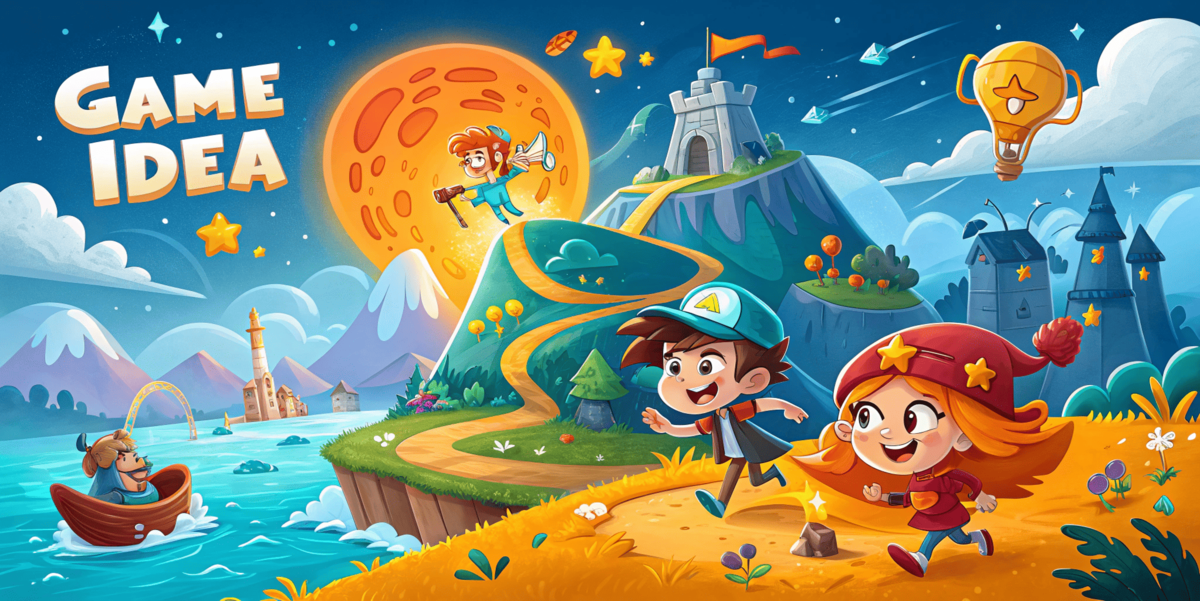Creating a video game is a thrilling way to express your creativity and technical skills. Whether you’re aiming for a simple mobile game or a story-driven adventure, anyone can start with the right tools and guidance. This guide provides a clear, beginner-friendly roadmap to making your first game. It includes practical steps, reliable resources, and valuable tips to help you succeed, written in simple language for easy understanding.
Step 1: Plan Your Game Idea
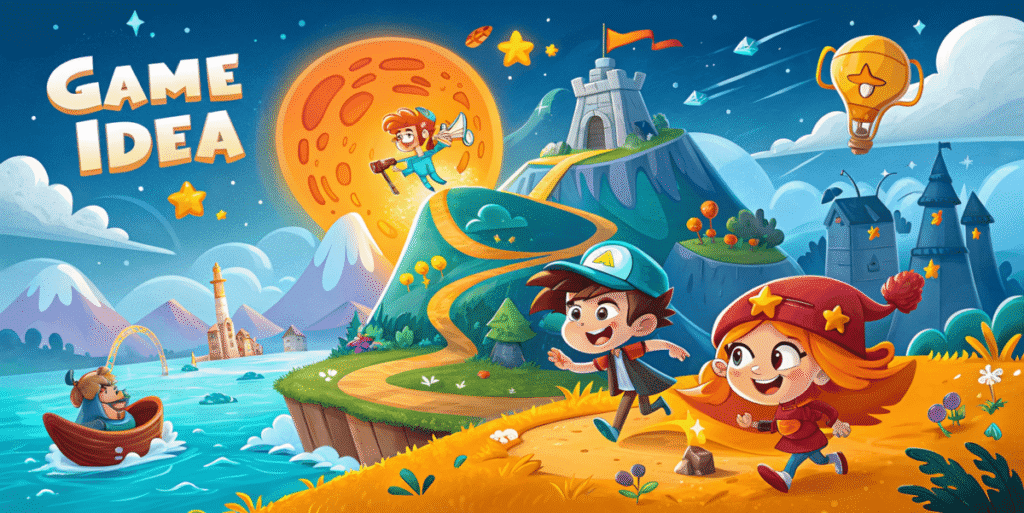
A strong game starts with a clear concept. Take time to brainstorm and organize your ideas to set a solid foundation. Hideo Kojima, creator of Metal Gear, advises, “A good game designer learns how to look at a problem from different perspectives so they can navigate around the wall in a new, uncommon way”. This mindset helps you craft unique ideas.
- Define the Genre: Choose a game type, such as puzzle, platformer, adventure, or strategy. For beginners, simple genres like 2D platformers or endless runners are manageable starting points.
- Craft a Story or Theme: Create a basic narrative or goal, like rescuing a character, exploring a world, or surviving challenges. For example, Flappy Bird has a simple goal (fly through pipes) that keeps players engaged.
- Set a Realistic Scope: Start with a small project, like a single-level game or a short prototype. Large projects can overwhelm beginners.
- Write a Game Design Document (GDD): Outline your game’s core elements—story, characters, mechanics, and goals. A simple one-page GDD keeps you focused.
Valuable Resource: Use Trello or Notion (free versions available) to organize your ideas. Check out Gamasutra (now GameDeveloper.com) for free game design articles and templates to structure your GDD.
Step 2: Choose the Right Tools
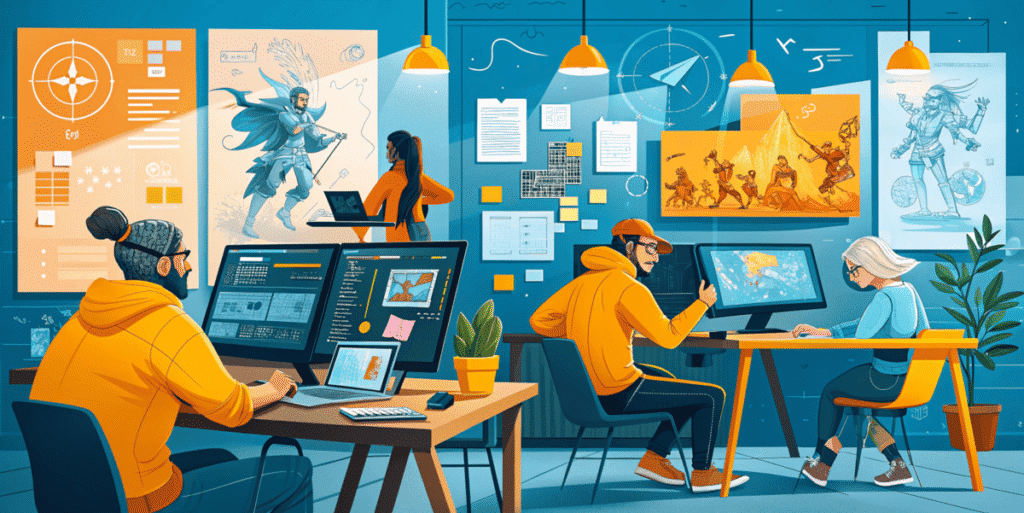
You don’t need advanced coding skills to make a game. Beginner-friendly tools make game development accessible.
- Game Engines:
- Unity: Ideal for 2D and 3D games. It uses C# but offers visual scripting (via Bolt or Unity’s Playmaker) for non-coders. Free for personal use.
- Godot: Free, open-source, and lightweight. Uses GDScript (similar to Python), great for beginners.
- GameMaker Studio: Perfect for 2D games, with a drag-and-drop interface. Free version available with limited features.
- Art and Sound Tools:
- GIMP or Photopea: Free for creating/editing game art. Photopea runs in your browser, no download needed.
- Blender: Free for 3D modeling, with beginner tutorials on YouTube.
- Audacity: Free for recording and editing audio.
- Freesound.org: A trusted source for free, royalty-free sound effects.
- LMMS: Free digital audio workstation for creating music.
- Version Control: Use GitHub (free) to save and manage your project files, especially if working in a team.
Why it matters: Choosing reliable, widely-used tools like Unity or Godot ensures access to tutorials and community support, saving you time.
Where to Find Info:
- Unity’s official website (unity.com) offers free tutorials and a “Learn” section with projects like “Roll-a-Ball.”
- Godot’s documentation (docs.godotengine.org) includes a step-by-step guide for beginners.
- GameMaker’s official site (yoyogames.com) has a “Tutorials” section for drag-and-drop projects.
Step 3: Learn the Basics
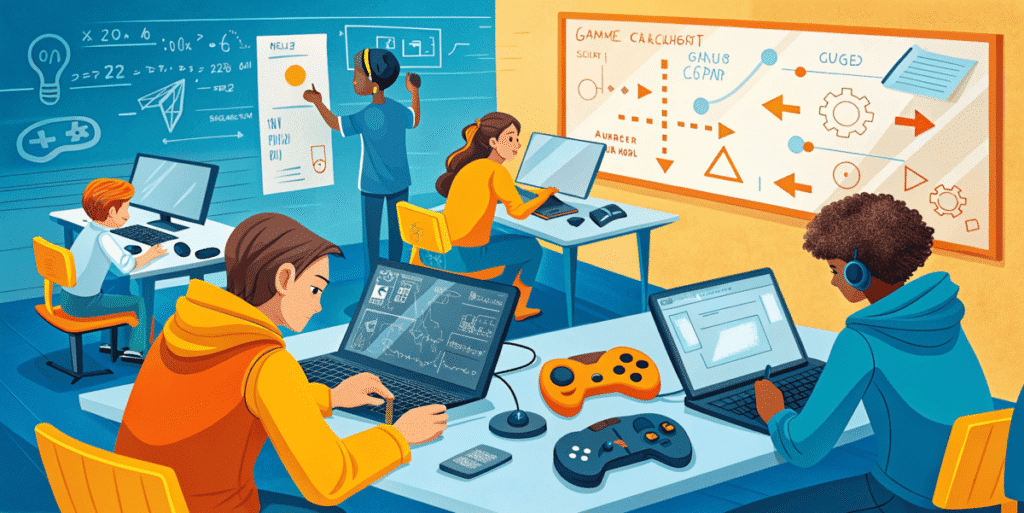
Invest time in learning your chosen tool to build confidence and avoid frustration. As Cliff Bleszinski, designer of Gears of War, notes, “Nobody in this industry knows what they’re doing, we just have a gut assumption”. Experimentation is key for beginners.
- Online Tutorials:
- YouTube: Channels like Brackeys (Unity), GDQuest (Godot), or GameMaker’s official channel offer free, beginner-friendly videos.
- Udemy/Coursera: Affordable courses like “Complete C# Unity Game Developer 2D” or “Godot Game Development for Beginners” cost $10-$20 during sales.
- Official Docs: Unity, Godot, and GameMaker have detailed, free documentation.
- Practice Projects: Start with small tasks, like making a character move, creating a basic menu, or adding a score system.
- Join Communities: Engage with developers on Reddit (r/gamedev, r/Unity2D, r/Godot), Discord (Unity or Godot servers), or forums like TIGSource for advice and feedback.
Example: Try Unity’s “Roll-a-Ball” tutorial to learn movement, collisions, and UI. For Godot, the “Dodge the Creeps” tutorial teaches 2D game basics in under an hour.
Valuable Resource: FreeCodeCamp.org offers free game development tutorials, including Python-based projects that work with Godot. Stack Overflow is great for troubleshooting specific coding issues.
Step 4: Design Your Game
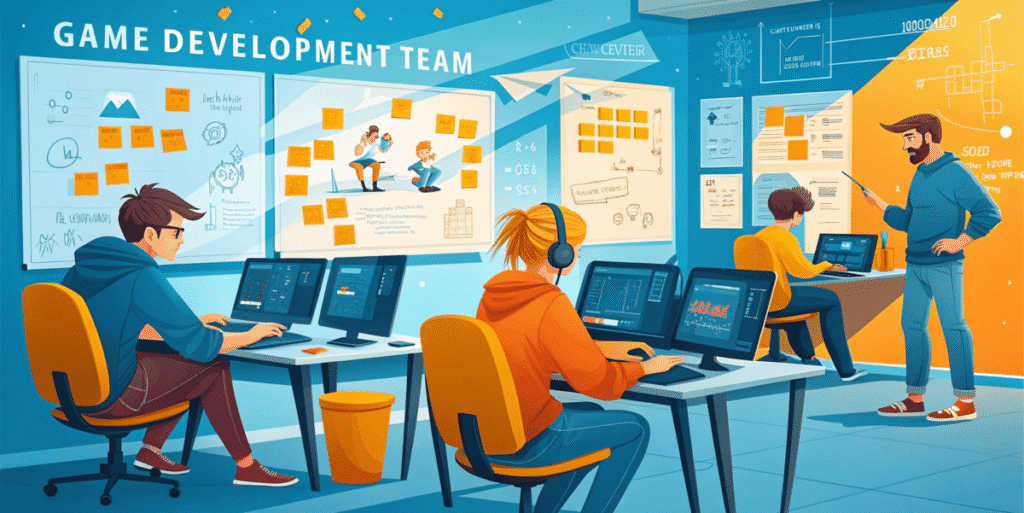
Build your game step-by-step, focusing on core elements to keep the process manageable.
Sid Meier, creator of Civilization, says, “Games are a series of interesting choices”. Focus on mechanics that keep players engaged.
Ken Wong, lead designer of Monument Valley, adds, “Prototype, prototype, prototype! Don’t waste time working on elaborate Game Design Document, since most of it will get scrapped as you prototype”.
- Game Mechanics: Define how players interact with your game. For a platformer, this could be jumping, running, or collecting items. Test one mechanic at a time.
- Levels or Environment: Create a simple level using basic shapes (e.g., cubes in Unity, sprites in Godot). Add details like platforms or obstacles later.
- Prototyping: Build a rough version of your game to test ideas. For example, create a single room with one enemy before designing a full level.
- Test Early and Often: Play your game to catch issues, like broken controls or unbalanced difficulty.
Pro Tip: Use placeholder art (like colored squares) during prototyping to focus on gameplay first.
Where to Find Info: GameDeveloper.com has articles on game design principles, like balancing difficulty. YouTube channels like Game Maker’s Toolkit offer free videos on designing fun mechanics.
“It should be the experience, that is touching. What I strive for is to make the person playing the game the director.”
Shigeru Miyamoto (Creator of Mario, The Legend of Zelda)
Step 5: Add Art and Sound

Good visuals and audio make your game immersive, even on a budget.
- Free Assets:
- OpenGameArt.org: Free sprites, tilesets, and music for 2D/3D games.
- Kenney.nl: High-quality, free assets for characters, environments, and UI.
- Itch.io: Offers free and paid asset packs created by indie developers.
- Create Your Own:
- Use GIMP or Photopea for 2D art, like character sprites or backgrounds.
- Use Blender for 3D models, with free tutorials on BlenderGuru.com.
- Create music in LMMS or use royalty-free tracks from Incompetech.com.
- Consistency: Stick to one art style (e.g., pixel art, cartoon, or low-poly) for a polished look.
- Sound Effects: Add sounds for actions like jumping, shooting, or collecting items. Freesound.org has thousands of free, licensed effects.
Example: For a 2D space shooter, use Kenney.nl’s pixel art spaceships and Freesound.org’s laser sounds to create a cohesive experience.
Where to Find Info: PixelProspector.com lists free and paid asset resources. YouTube’s “Art for Games” playlist by Chris DeLeon offers beginner tips for creating game art.
Step 6: Test and Improve
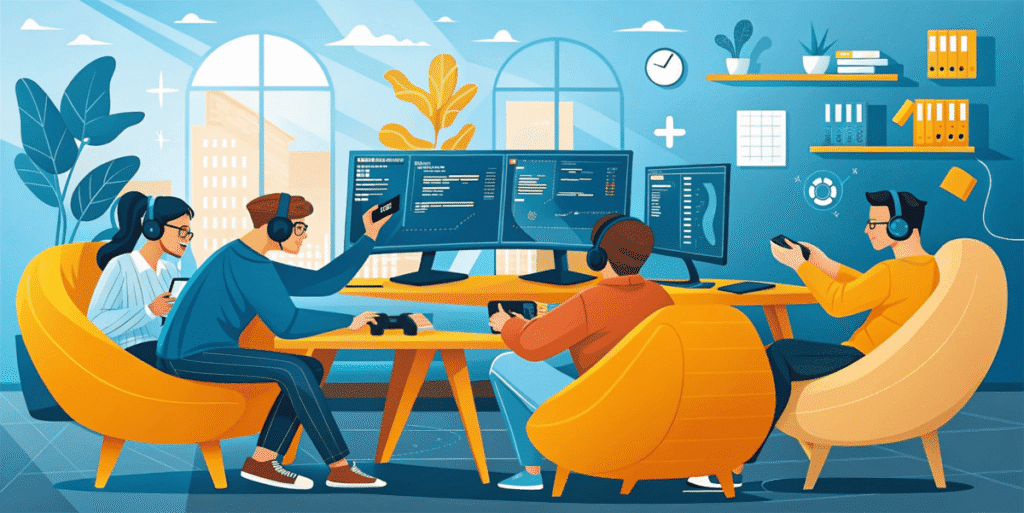
Testing ensures your game is fun, functional, and free of bugs.
- Playtesting: Test every feature yourself—check controls, collisions, and win/lose conditions.
- Get Feedback: Share your game with friends, family, or online communities like itch.io’s forums or r/gamedev. Ask specific questions, like “Is the game too hard?” or “Are the controls smooth?”
- Iterate: Fix bugs, adjust difficulty, and improve visuals based on feedback. For example, if players find a level too hard, reduce enemy speed or add checkpoints.
- Tools: Use Unity’s or Godot’s built-in debugging tools to track errors like crashes or performance issues.
Why it matters: Thorough testing builds a trustworthy game that players enjoy, boosting your credibility as a developer.
Where to Find Info: GDC Vault (gdcvault.com) offers free talks on playtesting techniques. Blogs like AskAGameDev.tumblr.com provide practical testing tips for beginners.
Step 7: Share Your Game
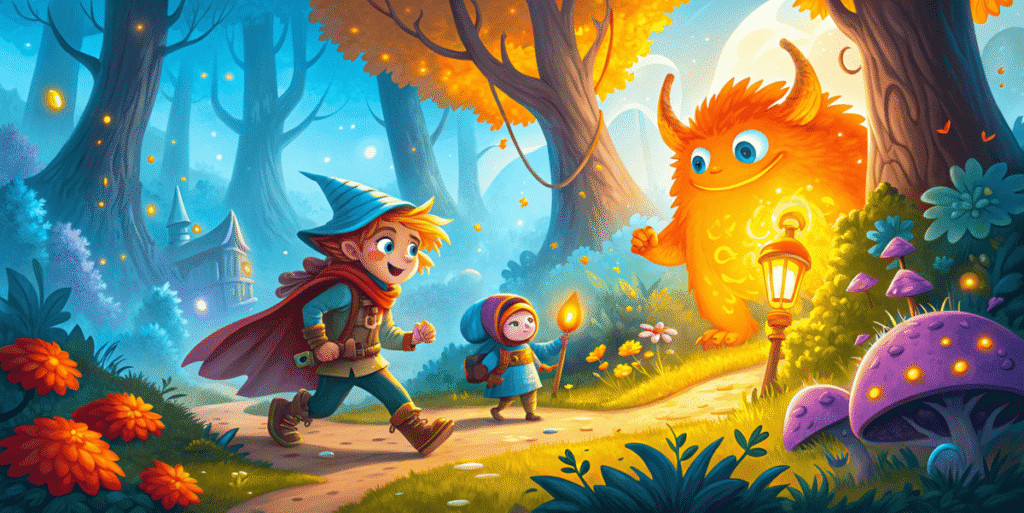
Publishing your game lets you reach players and build your reputation as a developer.
- Platforms:
- Itch.io: Free to upload, great for indie games, with a supportive community.
- Game Jolt: Another free platform for sharing games and getting feedback.
- Steam (if advanced): Requires a $100 fee but reaches a large audience.
- Promote Your Game:
- Share on social media (X, Twitter, or Instagram) with gameplay clips or screenshots.
- Post in communities like r/IndieGaming or Discord servers.
- Create a simple trailer using free tools like DaVinci Resolve.
- Learn from Feedback: Read player comments to improve your game or plan your next project.
Example: Indie hits like Among Us started on itch.io, gaining traction through community feedback before hitting mainstream platforms.
Where to Find Info: IndieGameDev.net offers guides on marketing and publishing. YouTube’s “How to Market Your Indie Game” by Thomas Brush provides free promotion strategies.
Step 8: Keep Learning and Growing
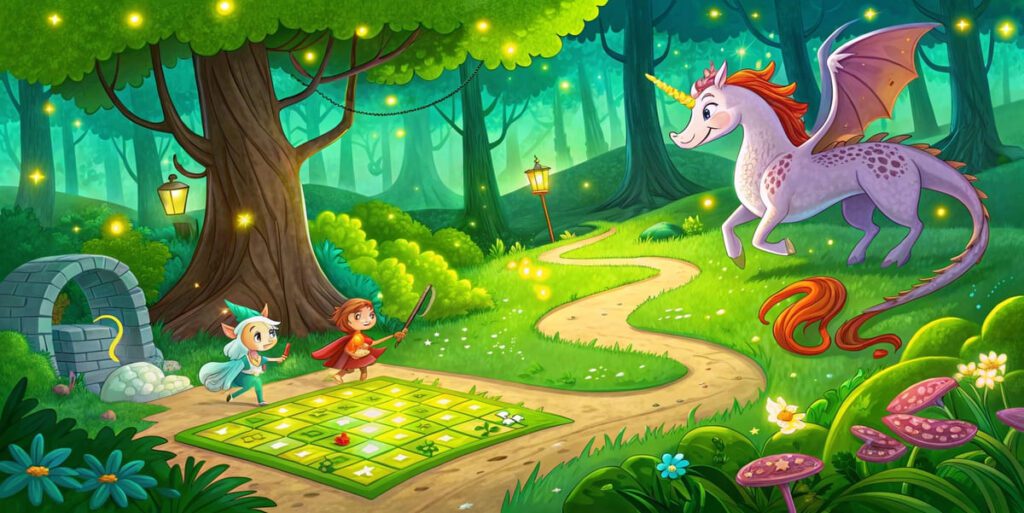
Game development is a journey. Continue improving your skills to make better games.
- Advanced Resources:
- Books: “The Art of Game Design” by Jesse Schell (available on Amazon or libraries) covers design principles.
- Courses: Platforms like Coursera, Udemy, or FutureLearn offer affordable game dev courses.
- Game Jams: Join events like Ludum Dare or Global Game Jam (online or local) to practice under time constraints and meet developers.
- Inspiration: Play indie games on itch.io or Steam to study what works. Analyze games like Hollow Knight for tight mechanics or Stardew Valley for storytelling.
- Networking: Connect with developers on LinkedIn or at events like GDC (Game Developers Conference) for mentorship and collaboration.
Valuable Resource: Follow #GameDev on X for real-time tips, job postings, and community projects. Websites like Gamasutra archive (GameDeveloper.com) offer free articles from industry experts.
Common Mistakes to Avoid
- Over-scoping: Don’t aim for a massive RPG as your first game. Start with a small project, like a single-level puzzle game.
- Skipping Learning: Rushing into development without tutorials leads to frustration. Spend a few hours learning your tool first.
- Ignoring Feedback: Player input is key to improving your game and building trust.
- Neglecting Backups: Save your project regularly on GitHub or an external drive to avoid losing work.
Why You Can Trust This Guide
This guide is built on proven practices from experienced indie developers and trusted resources like Unity’s official tutorials, Godot’s documentation, and communities like r/gamedev. The recommended tools (Unity, Godot, GIMP) and platforms (itch.io, Kenney.nl) are widely used by beginners and professionals alike, ensuring reliability. Insights are drawn from real-world successes, like Stardew Valley (built solo by Eric Barone using GameMaker) and Hollow Knight (created by a small team in Unity), showing that small-scale projects can lead to big results. All resources, such as OpenGameArt.org and Freesound.org, are vetted for quality and accessibility.
Final Thoughts
Making a video game is a rewarding blend of creativity, problem-solving, and technical skill. By starting small, using beginner-friendly tools, testing thoroughly, and tapping into reliable resources, you can create a game you’re proud of. The journey doesn’t end with one game—keep learning, experimenting, and sharing to grow as a developer.
Next Steps: Pick a game engine (Unity or Godot), follow a beginner tutorial on their official site, and start building a simple game today. Explore communities like r/gamedev and resources like GameDeveloper.com to stay inspired and supported.

